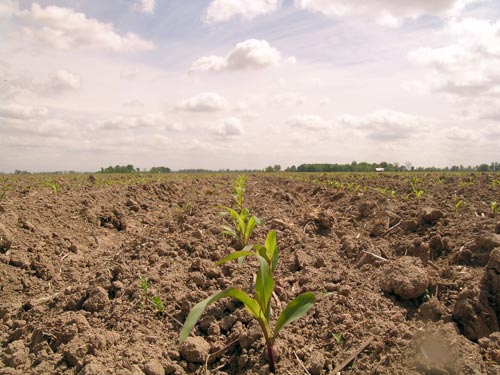
Research of LSU AgCenter scientist Brenda Tubaña looking at traditional soil testing techniques to determine what nutrients are present and if the nutrients are at sufficient levels to optimize yields. Also studying use of an optical sensor that measures the green biomass of a plant.
September 27, 2011

Improved soil fertility could boost yields in crops such as corn and soybeans and reduce nitrogen runoff into local water bodies. That’s the premise behind the research of LSU AgCenter scientist Brenda Tubaña.
Fertility issues can be a challenge for farmers. Compounding the problem is that most farmers grow crops on multiple soil types so a single fertility program is not practical and generally will lead to inconsistent yields.
Tubaña’s research involves a two-pronged approach. One involves traditional soil testing techniques to determine what nutrients are present and if the nutrients are at sufficient levels to optimize yields.
The second involves the use of an optical sensor that measures the green biomass of a plant.
“Fertilizer is a major production cost to farmers, especially in corn production. If we can determine that fertilizer applications can be reduced without affecting yields, then the farmer will benefit along with reducing the chance of runoff into nearby water bodies,” Tubaña said.
The optical sensor generates a reading called the normalized difference vegetative index. This reading is then plugged into an equation that estimates if a second application of nitrogen is needed and, if needed, the appropriate amount. This equation bases the nitrogen recommendation on in-season crop yield potential and available soil nitrogen.
“There has not been much change in the coefficient of the equation, but we continue to collect data every year to update the equation. It takes a large amount of data to refine the equation and have confidence in it being reasonably accurate,” Tubaña said.
The remote sensor approach has a distinct advantage over traditional soil testing methods because the readings are instantaneous and the plant does not have to be destroyed to be sampled. It is also possible that remote sensing could have applications beyond soybean and corn production.
According to the 2010 LSU AgCenter Ag Summary, more than 1.5 million acres of corn and soybeans were grown in Louisiana, with a large portion of this acreage in northeast and central Louisiana. Because of this distribution, Tubaña has research sites across this region including the Macon Ridge Research Station near Winnsboro in Franklin Parish, the Northeast Research Station near St. Joseph in Tensas Parish and a plot near Cheneyville in Rapides Parish. These sites comprise different soil types giving her an opportunity to see the influence soil types have on nutrient uptake.
Tubaña is also looking at ways to account for the amount of nitrogen present in the soil. If researchers are able to come up with a way to accurately quantify the existence of nitrogen in the soil in-season, either via soil testing or optical sensing, then the amount of nitrogen fertilizer applied can be tailored based on crop needs and available nitrogen in the soil. Complicating matters is that soil types can influence the uptake of nutrients.
The success of Tubaña’s research would allow producers to have a plan that can maximize their fertilizer applications, decrease their input costs and minimize the impact on the environment by reducing the amount of nitrates introduced into ground and surface waters. She believes that to ensure fertilization guidelines are effective, soil fertility research should be a continuous program to keep in pace with the changing production technology.
You May Also Like



